Matt Chatterley
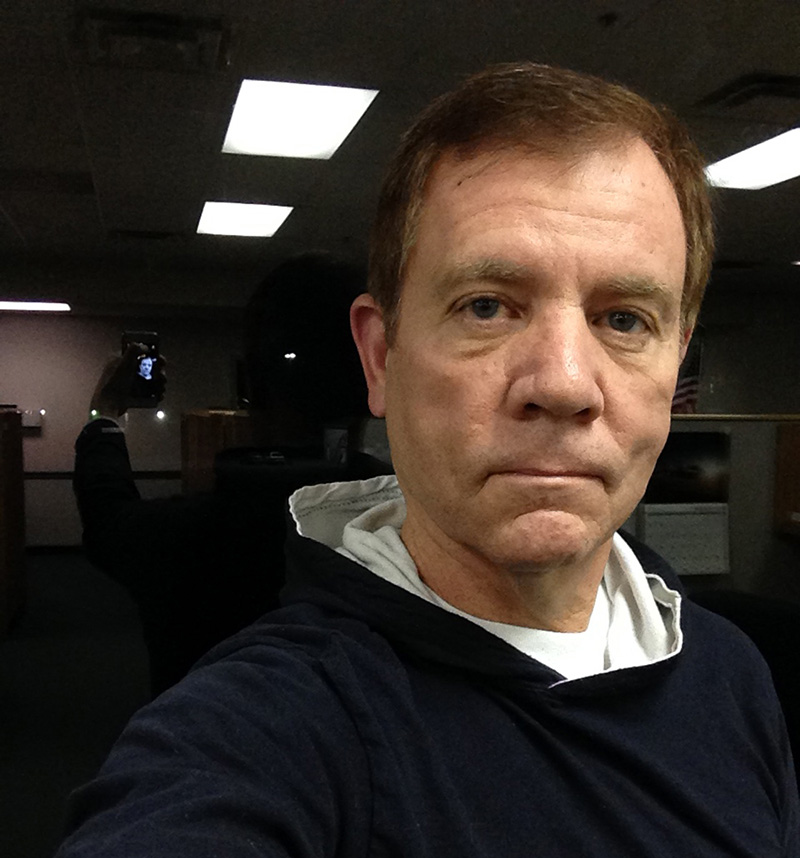
When did you start painting?
I think I have been an artist all my life. My parents tell me I named my first blankets with their colors—my pink and green, or my yellow and blue. My mother was an art teacher, one of her sisters loved to paint, and one of my ancestors is John Tullidge, an early Utah painter. So, I like to think I inherited some gene for art from them. I remember always loving to draw, but don’t remember really working at it or using painting as an expression of my artistic view of the world until junior high school or high school. During that time period I remember not being able to sleep late at night, and so I would go outside under the street light by our house and draw the shapes of trees against the sky. As I drew and painted more and more, some of my high school teachers asked me to do drawings for them as well. I didn’t really paint regularly until college, however, when I took watercolor classes during my freshman year from Glen Turner. And when I returned from my mission, I took oil painting from Bruce Smith. It was then I was exposed to the variety of expression and depth of feeling that painting can evoke.
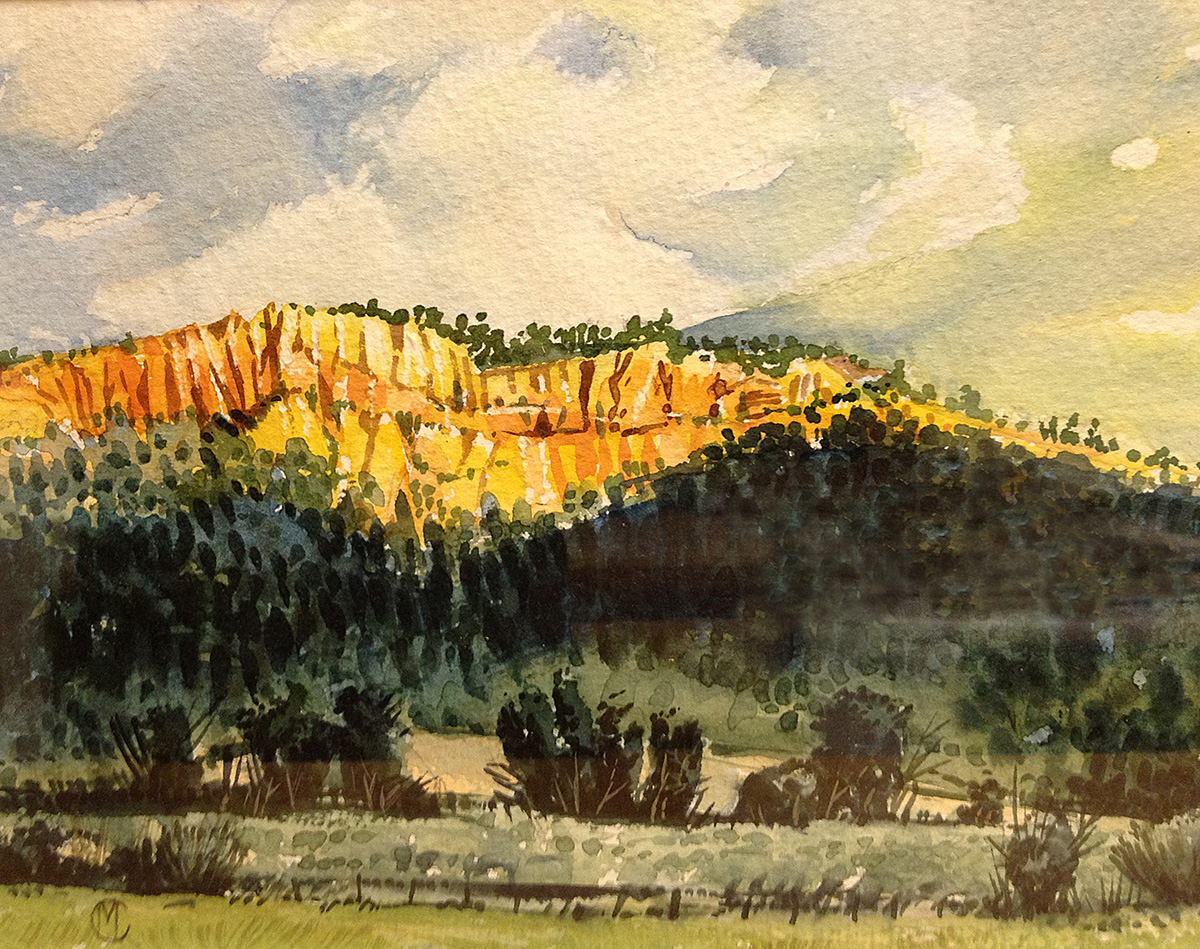
You paint and draw with oils, watercolors, and charcoal. Which one of these is your favorite medium (if you have one) and why?
Each medium has its own unique characteristics and possibilities. I haven’t found that one satisfies the entire range of my response to the world and my desire to express what I see and feel about it. I love what each medium offers as a tool and means of my artistic expression. Sometimes, for what I am feeling and seeing, watercolor seems to be the appropriate means of expression—with its freshness of transparent, liquid paint and the stain of color on textured paper.
Other times it is pencil, charcoal, and ink. I am drawn to the raw expressive power drawings portray. I have several books of master drawings that inspire me each time I look at them. My eyes and mind often respond to these more than the finished master paintings. This is true even when I look at works by a great painter like Rembrandt. I love his paintings, but his drawings and etchings have a life all their own.
Other examples include the paintings of Sargent and Homer. Their oils are masterpieces, but it is their watercolors, more immediate and unfinished, that really come alive for me. Sometimes oils, with their great versatility and range of expression, appeal to me as the means to represent what I am trying to convey in my painting. Oils can be used expressionistically, or they can be more solid, formal, and refined, building layer upon layer of color, texture, and form. And I definitely think there is a deepness and richness that only oil paintings can express.
So, each medium has its place. Sometimes, it is also a matter of how much time I have to make art. I learned this in a real, practical sense as a graphic illustrator constrained by the newspaper industry’s tight daily deadlines. It was a challenge, and sometimes a restriction. But it also afforded me the opportunity to work every day on my craft.
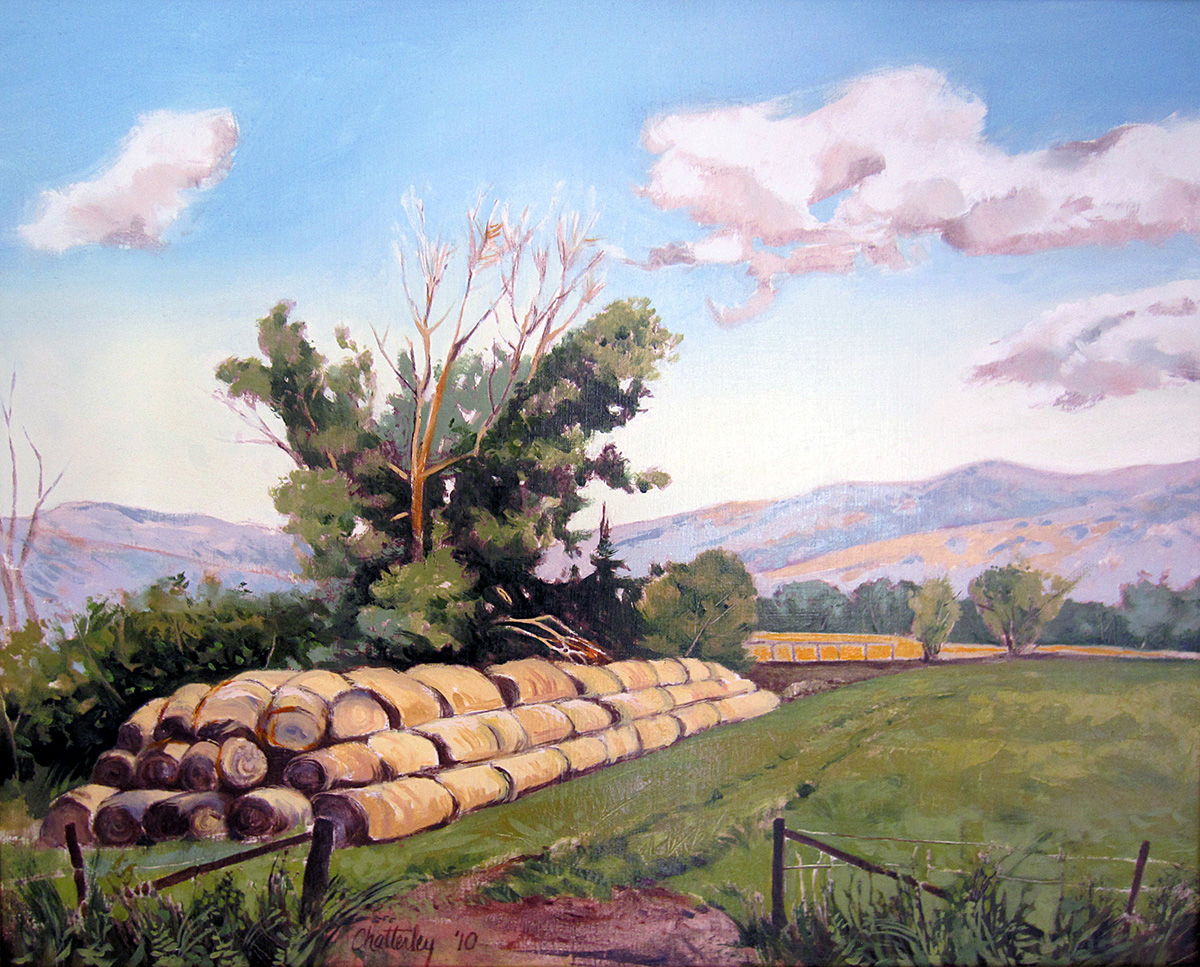
How do you prepare spiritually before you paint?
I think our lives have to be our spiritual preparation. By that I mean, for me, you have to be living your life according to the principles upon which the blessings you seek are predicated. It doesn’t work for me to look at spiritual preparation in the same way as, say, making a sacrifice. I rarely fast or pray, for example, over a specific project. Don’t get me wrong, I do fast and pray. And sometimes when a painting just isn’t working, I pray for help in finding a solution to the obstacle. But I believe in the scriptural teaching that to obey is better than sacrifice. Applied to the making of art, that means to me that if my spiritual life is where it should be, it will naturally affect my work for good—whether it’s my work as an artist, as a father and husband, or as a servant of the Lord. That spirituality in our lives depends on keeping all the facets of our lives in the appropriate balance.
How does the gospel influence your work?
The gospel is at the core of who I am. So I think that comes out in my work as an artist. Maybe we don’t see that immediately, or perhaps it isn’t evident on the surface of things. It is not, for example, dependent on my painting a specifically spiritual subject matter. But I hope if someone looks at my paintings, they don’t just say, “Oh, those are beautiful clouds,” or, “That’s a great grove of trees.” I hope the viewer also feels some degree of the reverence I have as the artist for what is being painted, whether it is a landscape, a person, or some flowers.
The Church uses a lot of landscape paintings in its temples—and it has really expanded that use with the recent explosion of murals produced for new temples. If you think of the temple experience, I find it remarkable and significant how much of that sacred time is spent portraying the creativity of God in the fashioning of this earth and universe. If His creativity is that important, it’s appropriate, then, for us to respond artistically, with a meager creative attempt of our own. Our articles of faith express that we seek after everything that is lovely and of good report or praiseworthy. I have tried to make that my guiding mantra, and it certainly is a gospel influence on my work.
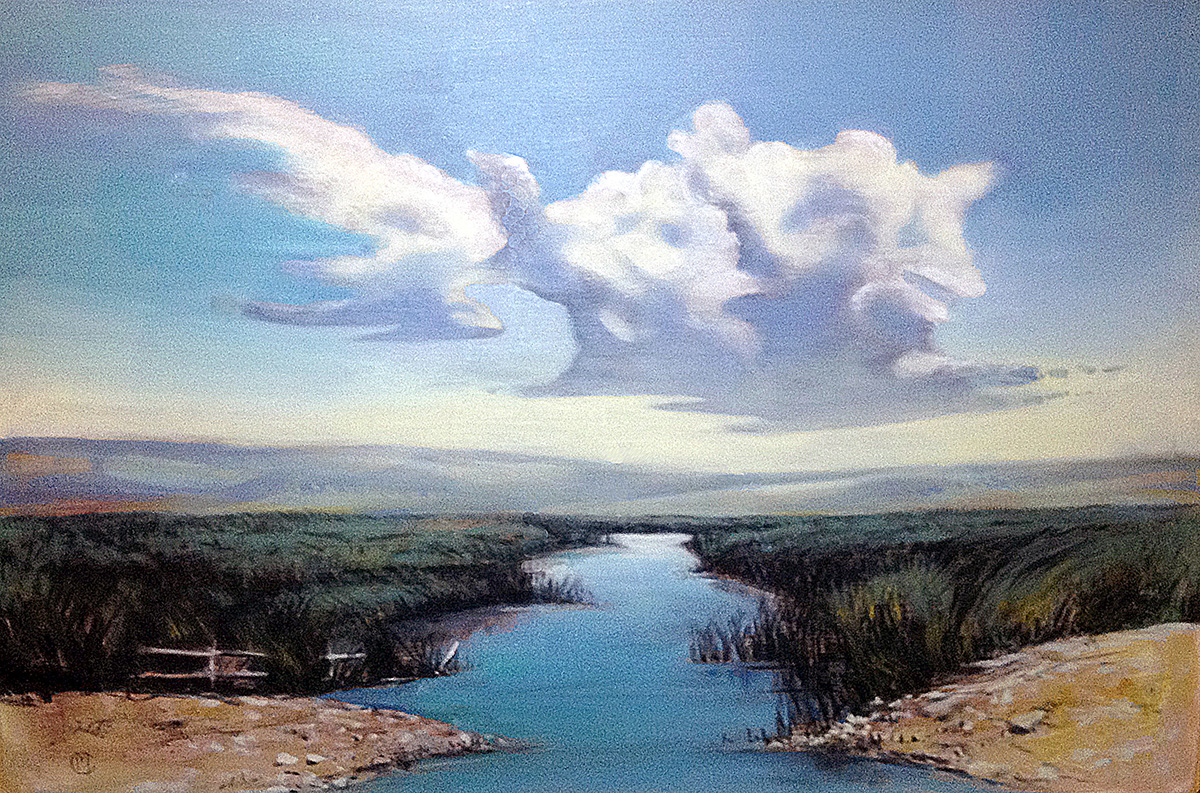
How do you see your work helping build the kingdom?
This seems like a simple question, but the answer isn’t simple. If I think that my success as an artist in this regard is linked to commercial success or recognition, then I could get discouraged and feel that I haven’t helped at all. Measurements of success by that standard are rather fickle. My work has been accepted in some exhibitions and not in others. So, there has to be something more than that.
If I am developing my talent and abilities, with a desire to become more like my Heavenly Father, who is the Supreme Creator, and increase the talents I have been given, or have come to this earth with, then every success and improvement helps build his kingdom.
If someone responds to what I have made with a feeling of appreciation and kinship and insight that lifts or enlightens them spiritually, or simply brings them joy in something beautiful, then I think I am helping build his kingdom.
Occasionally, you get the opportunity to do something directly, for example being commissioned to create an illustration or painting for a specific gospel purpose. Quite a few years ago I was commissioned by the National Park Service and the Iowa Mormon Trails Association and then the Nebraska Trails Association to create drawings representing the great Mormon pioneer trek across their states in 1846 and 1847. The drawings were used on interpretive panels placed at historic sites all across both states. That was a great experience that my family was able to share in too as we traveled the state of Iowa gathering reference photos and visiting sites. My hope for the project was that the drawings would bring to life for someone visiting those sites the spirit of the early pioneers and their commitment to building the kingdom which sustained them in their trials. That historic movement was not undertaken by a people interested in selfish welfare or personal wealth. They believed they were following the direction of God, and that is the spirit of helping to build the kingdom. If as an artist I have that same intent, then I will be helping build the work.
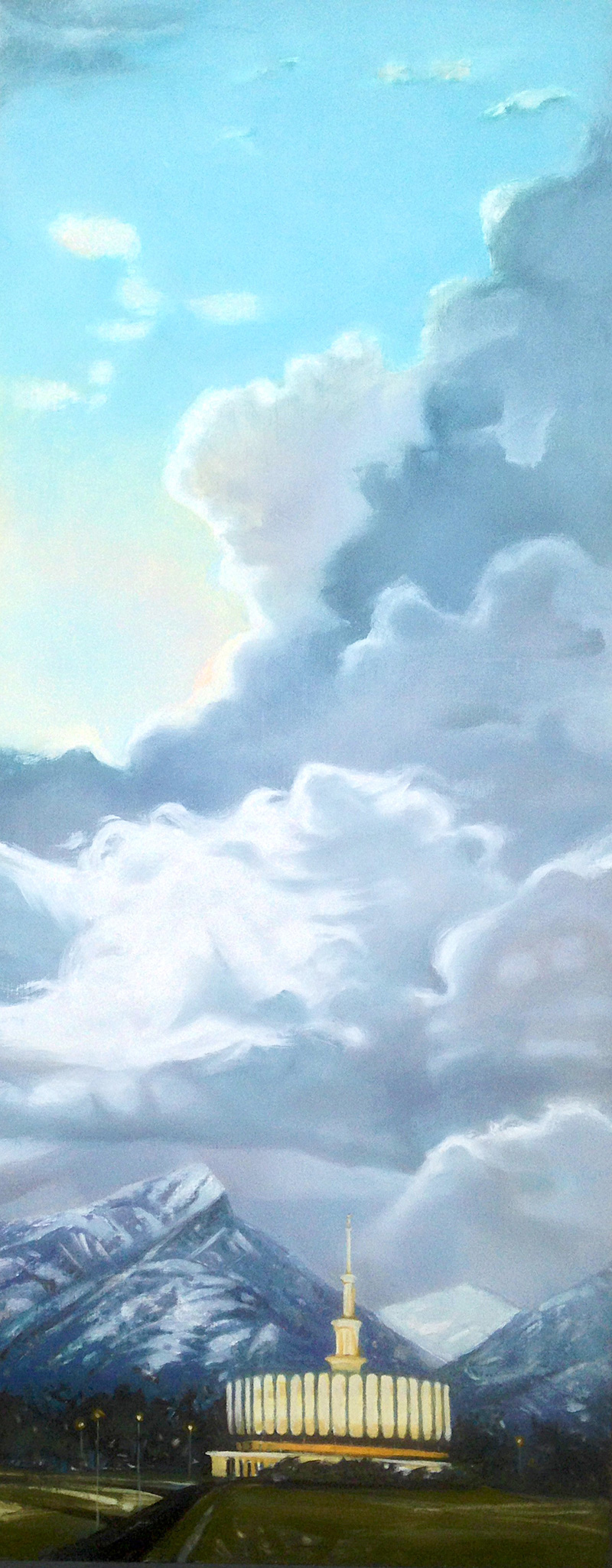
What challenges did you come across while painting your depiction of the Provo Temple, And the Lord Went Before Them, and how did you overcome them?
This painting started with my reaction to a group of clouds and the way the light revealed them, played upon them, and shined through them. Then, in my head, I began to formulate the idea of the clouds relating to the Provo Temple at the base of Rock Canyon in Provo. My wife, Ruth, and I were married in the Provo Temple, and I often run up that hill to the base of the canyon where I enjoy the view of the temple and the valley below. I sometimes run at night and was struck by the image of the temple shining through the darkness. So, I started to block out the painting’s composition and work on the colors and values. As I painted I began to think of the connection between the temple and the tops of the mountains where the Church has been established. And as I worked, several family members and friends saw the piece in various stages of completion and made comments and observations relating to the painting’s message. I had originally considered the clouds as storm clouds in contrast to the light of the temple shining through the storm. But, though a valid idea, the more I worked on the painting that interpretation just didn’t seem right. The clouds and the light associated with them were glorious, not menacing. A poet friend, Michael Parker, suggested that the clouds were reminiscent to him of the cloud that went before the wandering children of Israel to guide and protect them. And there was the answer: the connecting of heaven and earth—the temple, the mountains, and the clouds—all representations of the Lord of light who enlivens all creatures and creation, walking with us, going before us, in our trials and journeyings through life.

Do you have a favorite painting of yours? What makes it special?
Several years ago my wife and I visited some friends who were on a mission for the Church in Jordan. They took us around the area that in some ways remarkably resembled the familiar landscape of Utah, but which also evoked the history and people of ancient Israel. We walked along the Dead Sea, visited the River Jordan and the historical location of the baptism of Jesus by John in the wilderness. And we drove up Mount Nebo to the site where Moses looked out over the promised land he would not enter with the people whom he had served for so many years. On the way back down the mount, we came upon a Bedouin camp overlooking, in the distance, the Dead Sea, Jericho, and Jerusalem. A lone shepherdess stood on the rocky cliff above the camp of tents, temporary dwellings, camels, goats, and sheep. You could have seen the same exact scene 3,000 years ago. I snapped a reference picture, and sometime later after returning home, painted a watercolor of the scene. It is one of my favorite paintings because of the feelings it evokes of that trip and the things I felt being in that land.
Your paintings show many outdoor scenes, portraits, and still lifes. Do you have a preference when it comes to these subjects? If so, what makes them more or less enjoyable to paint?
I view all of my paintings and drawings, regardless of subject matter, as portraits. It might be a portrait of a mesa or butte, or a grove of trees, or a person, or a vase of flowers. Each has color and form, characteristics and feelings to explore, know, and interpret.
Having said that, the great majority of my paintings are landscapes, and I think it is because I respond strongly to the places we inhabit and experience, as people, on the earth. This world was created as the place for us to experience mortality, and sometimes, because of what happens to us, these places even become sacred. And so, place is important, and I want to paint that importance. I’m not just painting a road or a tree or a farm. I’m painting a place where someone walked, where a child played, where a parent buried a child, where the challenges of life were worked out and understood. I want my work to convey those feelings, though they may not be a specific representation of them.
I was born in southern Utah, grew up in Orem, lived in the Southwest for a few years and the Midwest for almost two decades. I’ve traveled all over the United States and to the Middle East. And now I live back in Utah. So I paint the landscapes I have been part of and that are now part of me. I haven’t lived in southern Utah for a long time, but I still feel that the colored sands of the canyon country are part of my blood because of the years of my childhood spent there.
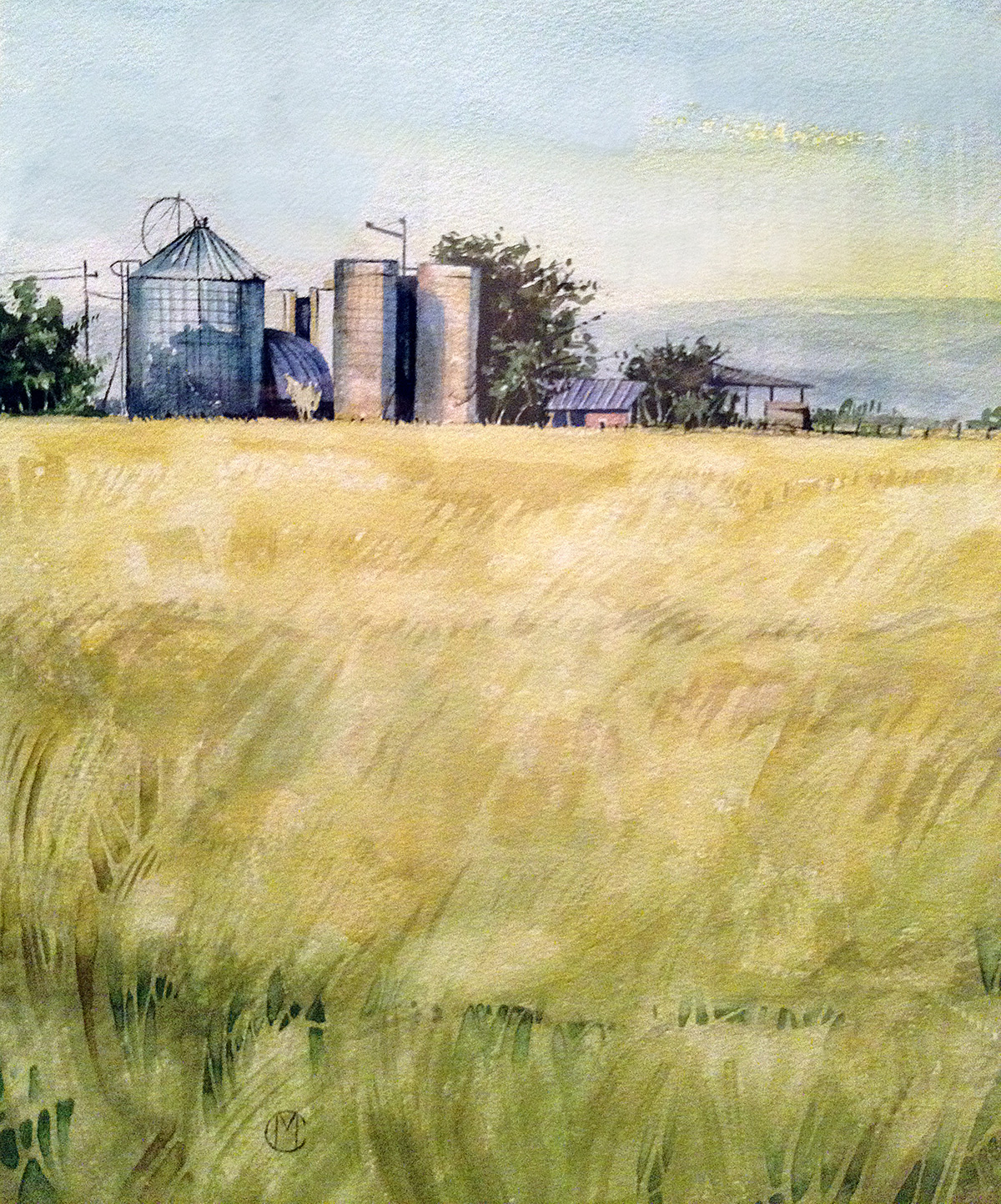

What are some of the challenges of being a professional painter and how do you overcome them?
I don’t feel I have overcome the challenges of being a professional painter. Especially if you define a professional painter as one who makes their living by their art, then that would be a great challenge I haven’t yet mastered—although I did spend twenty years as an artist, illustrator, and art director for newspaper and magazine publications. But then, I don’t know many artists who make their living from their art solely. Each artist has to find their own way through that maze, I think. For me, now, the challenge is to carve out regular time to work. To continue to labor, to improve, to “toil faithfully into the night” while others are sleeping. I have the hope that someday I will be an overnight success—fifty years in the making. I think an artist is always growing, developing, expanding, building the next project on the back of the projects before it. I think you overcome challenges as an artist like you do those in life. You don’t give up. You keep working, believing in your talent, with faith that eventually you will see the results in your work that you are seeking. For most of us it is a journey of small steps and little successes along the way. Learning things “line upon line” is a principle that can be uniquely applied to artists, don’t you think?
What are you currently working on?
I’m currently working on a series of paintings of southern Utah—images of water, sandstone, and sky based on Lake Powell and other Utah “places.” In addition, I also have a series of watercolor portraits of friends and family I’m developing and a series of still lifes I’m exploring. So, my mind is working in a lot of different directions all at once. I am also in the formulation process of a painting to enter into the Church’s International Art Competition this fall. I haven’t had anything accepted in that venue yet. Maybe this is the year!


Where do you see your work taking you in the future?
I hope my work will continue to move toward a personal vision and interpretation of the world and our experience in it. The fun thing is, it’s a process. I don’t have a clear vision of where it will end up. I hope the process will continue to be fulfilling to me artistically, and resonate with others as well.
Any advice for future artists out there?
Art is at its core an expression of who you are. So, making art goes hand in hand with understanding yourself. That takes some honest examination of your own soul and, as the poet Rainer Maria Rilke advised, time in solitude. Just as importantly, however, you must work. Work to learn the skills, techniques, tools, and history of your craft. These are what give you the ability to reveal and express your voice and vision fully.
I think artists and poets share a kinship in the world, because I often find solace and support in poetry, including these words from Robert Frost, which I think applies to the artist’s journey:
Two roads diverged in a yellow wood,
And sorry I could not travel both
And be one traveler, long I stood
And looked down one as far as I could
To where it bent in the undergrowth;
Then took the other, as just as fair,
And having perhaps the better claim,
Because it was grassy and wanted wear;
Though as for that the passing there
Had worn them really about the same,
And both that morning equally lay
In leaves no step had trodden black.
Oh, I kept the first for another day!
Yet knowing how way leads on to way,
I doubted if I should ever come back.
I shall be telling this with a sigh
Somewhere ages and ages hence:
Two roads diverged in a wood, and I—
I took the one less traveled by,
And that has made all the difference. ❧
